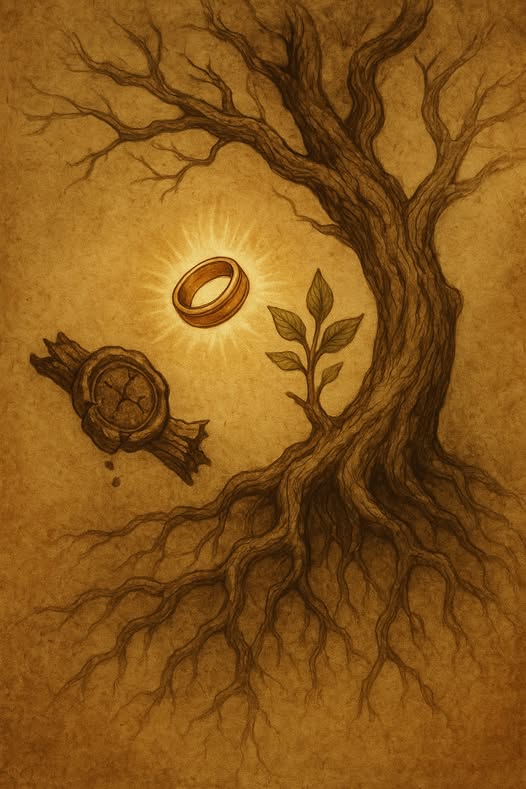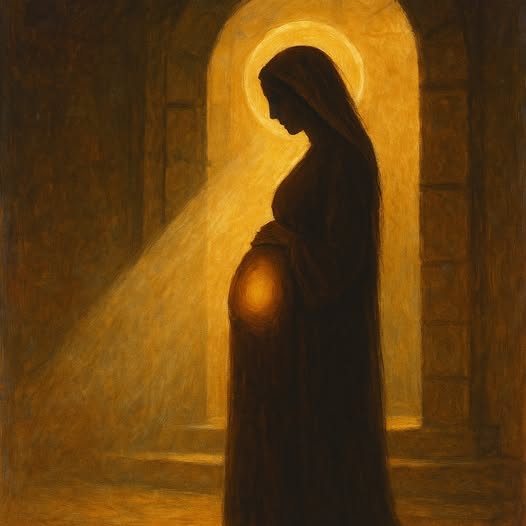
The biblical view of human life begins with the most foundational truth in Scripture: “God created man in His own image” (Genesis 1:27). Unlike the surrounding cultures of the ancient Near East, where only kings reflected divinity, Israel declared that every human being bore the image of Yahweh. This principle shaped the covenant people’s moral and legal systems. The Law commanded care for the widow, the orphan, and the foreigner. It forbade the sacrifice of children. Justice was not a privilege for the strong. It was a duty toward the weak.
The prophets reinforced this ethic repeatedly. Isaiah, Amos, Jeremiah, and Micah rebuked rulers not merely for idol worship, but for oppressing the poor, neglecting the sick, and perverting justice. Human life was sacred not because of economic output, but because it belonged to the Creator.
Jesus and the Early Church
Jesus expanded and embodied this ethic perfectly. He healed the sick, welcomed the outcast, and affirmed the dignity of the forgotten. He did not divide people by status or function. He saw them as lost sheep, image-bearers in need of restoration. This was not sentiment. It was theology in action.
The early Church followed His example with startling results. In a Roman culture where the disabled were abandoned, the elderly discarded, and infants exposed to die, Christians responded with radical mercy. They rescued infants from trash heaps. They nursed the sick during plagues, often at the cost of their own lives. And most notably, they created something the world had never seen before: the hospital.
The first true hospital was founded in the late fourth century by St. Basil the Great in Caesarea, Cappadocia. The Basilias was a large complex that included housing for the poor, medical treatment for the sick, and care for lepers. It was not a tool of state power or military strategy, but a direct expression of Christian love for those society rejected. Basil believed that if Christ healed the broken, then His followers must do the same.
Other Christians followed his lead. St. Fabiola in Rome founded one of the first hospitals in the West. Monasteries across Europe established infirmaries, not only for monks, but for pilgrims, travelers, beggars, and the dying. The very word hospital comes from hospitalis, Latin for “guest,” reflecting the belief that in caring for the sick, Christians were receiving Christ Himself.
This was revolutionary. The Greco-Roman world had temples for the healthy and private physicians for the elite, but no institutions devoted to caring for the poor and dying until Christians built them. Their actions were not driven by utility. They were driven by conviction: life matters because it is made by God, seen by Christ, and destined for eternity.
That is the root. That is the legacy. And when modern systems again begin to measure lives by what they cost instead of what they are, Christians must not be silent. They must remember who they are.
Hospice Is Not the Enemy
It is important to be clear: this is not an argument against hospice or genuine palliative care. Hospice reflects the biblical ethic of compassion. It affirms that life has value even in suffering, and that dignity is preserved not by hastening death, but by honoring a person’s final days with comfort and presence.
The danger arises when that sacred view of life is replaced by a cold calculation. Instead of seeing the end of life as a transition, society begins to treat it as a solution to systemic and financial problems. When the vulnerable are seen as obstacles, death becomes a policy tool, and compassion is used to justify elimination.
A Troubling Shift in Canada
Nowhere is this more visible than in Canada. What began as Medical Assistance in Dying (MAiD) for those suffering from unbearable physical pain has quickly expanded into something far broader. In 2016, just over 1,000 Canadians ended their lives through MAiD. By 2022, that number had surged to over 13,000. It is now reportedly the sixth leading cause of death in the country.
Even more troubling is who is now eligible. Increasingly, MAiD is offered not to those with terminal illness, but to those who are poor, mentally ill, or socially isolated. Some have requested euthanasia because they cannot afford housing or support services. Others have been told that medical treatment is not available, but MAiD is.
Doctors have reported being pressured to bring up euthanasia as an option, even in cases where it would never have been considered before. And some policy experts have openly acknowledged that the healthcare system is overloaded and needs a centralized solution. Quietly, and without ever officially declaring it, death is being presented as that solution.
Death as an Economic Decision
One of the most disturbing elements of Canada’s MAiD system is how these deaths are recorded. In several provinces, including British Columbia and Ontario, official guidance instructs physicians to list the person’s underlying illness or condition as the cause of death, even when the immediate act involved a medically administered lethal substance.
This is not a clerical oversight. In British Columbia, the College of Physicians and Surgeons directs providers to list MAiD in Part I(a) of the Medical Certificate of Death, but the manner of death is still to be recorded as “natural.” The underlying illness remains the official cause. In Ontario, physicians providing MAiD are required to notify the Office of the Chief Coroner, and the death certificate process generally follows similar lines, emphasizing the condition rather than the procedure.
At the federal level, Health Canada’s monitoring and reporting system collects MAiD data separately, but the death certificates provided to families and registered in provincial statistics are shaped by these regional protocols. In public datasets and vital statistics, a MAiD death may appear indistinguishable from a natural death.
The effect is not only statistical. It reframes euthanasia as a quiet extension of medical care, rather than a deliberate, policy-driven act of ending life. This framing can soften moral and public resistance, making it easier to expand eligibility without backlash.
When Consent Looks Like Coercion
While MAiD is legally defined as voluntary, the real-world conditions under which many of these decisions are made raise serious ethical concerns. Patients have increasingly reported seeking MAiD due to poverty, homelessness, mental illness, or chronic but non-terminal suffering. When essential care is delayed or denied, and when death is positioned as the one guaranteed option, consent begins to look less like a choice and more like surrender.
- In 2022, a Canadian Forces veteran suffering from PTSD and a traumatic brain injury approached Veterans Affairs for help. Instead of receiving mental health support, he was offered MAiD.
- A woman named Denise, suffering from multiple chemical sensitivities, chose MAiD because she could not find safe housing. She was not terminally ill, but her pleas for accommodation went unanswered.
- A man with a degenerative brain condition applied for MAiD after struggling to get the in-home care he needed. His doctor admitted that with proper support, he would not have sought death.
- A 51-year-old woman with long COVID applied due to unrelenting pain and fatigue. She said she would have preferred to live, but her condition had become intolerable without treatment options.
- Roger Foley, a man with a neurological condition, recorded hospital staff suggesting assisted death would cost less than long-term care.
- A woman with scoliosis and fibromyalgia applied after she could no longer afford her medications. Poverty, not disease, drove her request.
- A homeless man in Ontario with schizophrenia requested MAiD, saying he could not bear another winter on the streets. When offered housing, he changed his mind.
Each of these stories reveals a disturbing pattern. MAiD is increasingly chosen not because people are dying, but because they are abandoned. When society withholds what is needed to live, and then offers death as the only reliable option, consent is corrupted. What began as mercy becomes machinery.
For Christians, this is a sobering reminder. Once a society redefines life in terms of burden or cost, it will not stop at one category of people. The boundaries always expand. What is happening in Canada is not isolated. It is a warning.
Warnings for the American System
This is not just a Canadian problem. The trajectory in the United States is heading in a similar direction. For Christians, the concern is not only about policy failure but about the erosion of a biblical view of life. When systems measure human worth by cost or utility, they deny the truth that every person bears the image of God.
The System Before the Affordable Care Act
The American healthcare system already had major problems before the Affordable Care Act. It had drifted far from a genuine market. Hospitals and providers depended on higher payments from privately insured patients to cover losses from those without insurance or those on government plans that reimbursed below cost. This practice inflated prices for everyone, distorted incentives, and created inefficiencies that made the system fragile and inequitable.
Yet, for all its flaws, this system had one unintended strength. It provided a safety valve for Canada’s single-payer system. Many Canadians with financial means traveled south for timely treatments that were rationed, delayed, or unavailable in their own country. The U.S. absorbed that overflow, offering a parallel of last resort when state-run care could not meet the demand.
The System After the Affordable Care Act
The Affordable Care Act did not repair these weaknesses. It deepened them. Marketed as a solution for spiraling costs and poor coverage, the law introduced layers of bureaucracy that made healthcare harder to navigate, more expensive to maintain, and less sustainable.
This aligned with a political strategy often described as “top-down, bottom-up, inside-out.” Pressure was applied from federal mandates, grassroots frustration, and institutional overload until centralized control appeared to be the only option.
Concerns about so-called “death panels” were dismissed, but the phrase captured a deeper truth. The issue was never one specific board or agency. It was the shift in logic. When government becomes the primary payer, cost becomes the ultimate measure. And when cost dictates care, life is treated not as a sacred gift but as a resource to be managed.
The Direction Ahead
America is not yet where Canada is, but it is moving along the same path. If the trajectory continues, economic efficiency will take precedence over human dignity. The vulnerable will once again be the first to feel the consequences.
For Christians, this trajectory is a call to action. Our response cannot be passive observation. The early Church confronted systems that discarded the weak by rescuing, serving, and building institutions of mercy. In the same way, Christians today must guard against the quiet normalization of policies that treat death as a solution. To defend life is not only to protect the vulnerable, but to bear witness to the God who gives life and calls it sacred.
Conclusion
The Christian calling is not to efficiency, but to faithfulness. It is not to balance budgets, but to bear burdens. The growing use of MAiD in Canada is not mercy. It is moral failure. It is the quiet abandonment of those most in need, justified by spreadsheets and policy drafts.
But this is not the first time the world has devalued life. The early Christians lived under an empire that discarded the weak. They responded not with anger or compromise, but with action. They rescued, they served, and they built. They remembered who they were.
That same call echoes today. If we remain silent while our neighbors are quietly nudged toward death for the sake of the system, we will have already surrendered the truth we were entrusted to protect. Life matters. Not because it is useful, but because it is sacred.
Discussion Questions
- In Genesis 1:27, every human is described as being made in the image of God. How does this truth shape a Christian understanding of dignity compared to cultures that valued only the powerful?
- The prophets condemned both idolatry and injustice toward the vulnerable. How do those two sins connect, and what does that mean for how Christians live today?
- The early Church built hospitals and cared for the abandoned. What does their example teach us about what faithfulness looks like in a culture that treats life as expendable?
- Hospice can reflect biblical compassion, but euthanasia reframes death as a solution. How can Christians clearly draw that line in conversations about end-of-life care?
- In Canada, many people have chosen MAiD not because of terminal illness, but because of poverty, homelessness, or lack of support. When neglect creates suffering, how should Christians respond so that the Church, not the state, becomes the answer?
Want to Know More?
- Nigel M. de S. Cameron, The New Medicine: Life and Death after Hippocrates (Crossway, 1991)
Explores how modern medical ethics diverged from a sanctity-of-life view, and why Christians must recover a biblical foundation in healthcare. - Daniel Callahan, The Troubled Dream of Life: Living with Mortality (Georgetown University Press, 2000)
A careful look at how societies handle mortality, including the tensions between compassion, cost, and control at the end of life. - John Wyatt, Matters of Life and Death: Human Dilemmas in the Light of the Christian Faith (InterVarsity Press, 2009)
Written by a Christian physician, this book addresses euthanasia, assisted suicide, and medical ethics from a biblical worldview. - Gilbert Meilaender, Bioethics: A Primer for Christians (Eerdmans, 2013)
A concise but rich guide to key bioethical issues, including assisted dying, that emphasizes the theological roots of human dignity. - Gary B. Ferngren, Medicine and Health Care in Early Christianity (Johns Hopkins University Press, 2009)
Provides historical detail on how the early Church’s care for the sick, the poor, and the dying reshaped the ancient world.




